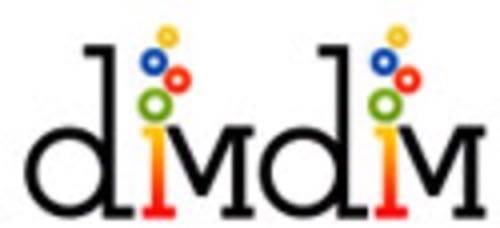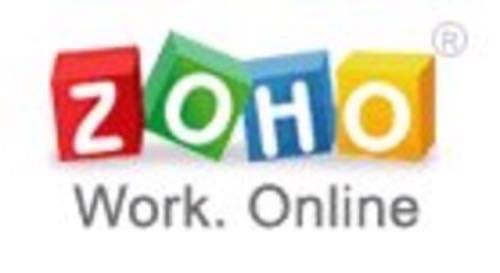Enterprise adoption of cloud computing, SaaS, and social media (whatever you want to call it) is accelerating. This is a healthy market, in which vendors are doing well in a tough economy. As we near the end of a year that will go down in history with the words “meltdown,” “panic,” “crisis,” and “depression” attached, it is time to celebrate the winners in this market, enterprise-focused web products that are already doing well and poised for even greater success in 2009. And if these products excite you, we invite you to subscribe to the ReadWriteWeb Enterprise Channel.

This is the sixth in our series of top products of 2008:
- Top 10 Semantic Web Products of 2008
- Top 10 International Products of 2008
- Top 10 Consumer Web Apps of 2008
- Top 10 RSS and Syndication Products of 2008
- Top 10 Mobile Web Products of 2008
Our Criteria
In no order of importance (all three are critical), we looked for three attributes for the top Enterprise web products:
- Innovation: This is the time for firms that opened up entirely new market categories through disruptive innovation to reap the rewards.
- Traction: We cannot put a cool new company whose product is just emerging from beta into our top 10. Winners should already have major traction in the market.
- Longevity: This is a mix of profitability and deep pockets; an ability to outlast the competition.
The market categories that feature in this post are: platforms (with 2 companies making the list), wiki (2), web office (2), CMS 2.0 (1), project collaboration (1), web conferencing (1), and contact networking (1). Note that we didn’t consider micro-blogging, RSS or mash-up products, as we consider those to be features rather than products – in the Enterprise market at least.
Drum Roll… and the List
Note: to avoid ranking them (which is impossible because they compete in different markets), the winners aren’t in any particular order.
Amazon Web Services (AWS)
Who would have thought that a bookseller could have generated such enthusiasm and loyalty in the developer community? Eons ago, Microsoft won big by winning the hearts and minds of developers. Amazon does that today better than any other company.

Platforms will do well in 2009, though not many will. The platforms market is a race for scale, requiring massively deep pockets. We chose two, but they have lots of very strong competitors breathing down their necks.
Basecamp
37Signals, maker of Basecamp, is a lot of peoples favorite start-up (even its competitors feel obliged to say nice things about the company). The way they do project collaboration is almost as important as what they do. Their “less is more” elegance has become the mantra of developers everywhere. The one issue? It keeps its products separate. You have to choose which one to use. Vendors with suites could take advantage of this.

Confluence (Atlassian)
We are seeing major wiki adoption in the enterprise. It is simply a much easier way to collaborate than by putting lots of complex technology under the general umbrella of the Intranet.

It is hard to pick winners here. The space is crowded. In fact, we picked two for this category (MindTouch is the other). Atlassian seems a safe bet for enterprise, having traction and a good breadth of products. It is also nice that a vendor from the southern-hemisphere (Australia) made the top 10.
DimDim
This is our small-vendor recession play. In a recession, companies travel less, so they use web conferencing more. They also cut whatever budgets they can, and web conferencing isn’t spared. DimDim’s proposition is incredibly simple: web conferencing for less cost. The one issue? It is still a bit raw, and the company will need deep pockets to satisfy what we expect will be a growing demand.

Google Apps
Google Apps is one of Google’s more mature offerings outside of search. It’s a huge market, and Google has major traction. The move from PC-based office software to web-based “office tools” accelerated in 2008 and became increasingly mainstream.

The one issue? Google may be spreading itself too thin. Unbelievably, its flagship Gmail is still in beta and suffers from reliability issues, and some modules (such as for spreadsheet) still seem a bit raw compared to those of competitors.
WordPress
This choice may be controversial. We see a big market in the replacement of first-generation content management systems (CMS), with simpler SaaS tools that have blogging at their core. Automattic’s WordPress is growing in reputation as the platform that delivers this the best.

Deciding between Movable Type and WordPress was a really tough call. Movable Type (which we use for ReadWriteWeb) has major traction in Enterprise accounts. In the end, we chose WordPress based on the quality of its continuous innovation. Salesforce, though, has recently entered this market from a totally different angle. We see CMS 2.0 integrating what are currently stand-alone features: social networking, video, and so on.
This is a controversial pick. We see this as the “contact networking” space, which will be part of next generation CRM. We deliberately avoided the “social networking” label. Enterprises don’t care about being social: they care about managing contacts to make money. Most people would not categorize LinkedIn as “enterprise.” It would have been easier to include one of the many vendors that sell white-label enterprise social-networking software. We didn’t do that for the same reason we didn’t consider micro-blogging as a category: its more a feature than a category, much less a product or company.

But contact networking leader LinkedIn has tackled two of the biggest issues for enterprise: acquiring customers and hiring employees. And it has a huge networks-effect advantage over any of its competitors. It could easily create an “internal enterprise LinkedIn.” This is LinkedIn’s game to win or lose: it holds the cards in the contact graph deck.
MindTouch Deki
This is the other winner in the crowded wiki ++ space. You can tell a market is in the tornado-high growth stage of the market adoption cycle when it has really tough head-to-head competition. In this particular market, MindTouch and SocialText are banging heads. It looks like a close fight, too close to call really, but we had to make a call and went with MindTouch. It also competes with Atlassian, but not head to head.

We added “++” to “wiki” because the leading vendors are rapidly incorporating micro-blogging, social networking, forums, and other collaboration tools. Integration is key, so we see this market moving towards suites, but with wiki at the core.
Force.com (Salesforce)
This company defined the SaaS/cloud space with brilliant marketing and relentless focus. While it is clearly dominant in the SaaS CRM space, it is also a serious contender in the bigger platform space. If we had to pick one reason why Force.com is a major platform winner, it would be because of its focus on making its partner eco-system succeed. The one big issue? Its core CRM market is being undermined by two serious low-cost competors: SugarCRM and Zoho CRM.

Zoho
Zoho has so many apps, that we can’t pick just one! But it is our David-vs-Goliath winner, so deserves to be on this list. At the beginning of the year, the web office market looked crowded. It now has Zoho (David) vs. Google (Goliath), with Microsoft, as always, not to be counted out. In fact, Zoho has yet another Goliath on its hands because it also competes with Salesforce in the CRM space, which points to its one big issue: it is spread very thin, and some of its products show it from their lack of depth.

Limiting It to 10 Is Hard!
This being a time of “back to basics,” we had to forgo the luxury of an 11-winner list. We certainly did not allow ourselves a list of 100 companies, which would have kept everybody happy. So we know we have almost certainly missed your favorite company: we expect and hope you’ll tell us in the comments.
We were looking for companies that would still be considered success stories one year from now, and hoping to avoid the embarrassment of hailing as a great success a company that crashes and burns in the harsh economy of 2009. That means our top 10 winners should be profitable, or very close to profitability, today. These are companies that would attract a big fat premium if they were to be acquired, even in a lousy market, because they would not be desperate for an exit and could afford to wait out the economy until markets and their valuations become healthier.
We’re playing it safe with our top 10 list for one reason: because that is what buyers will be doing.










